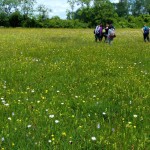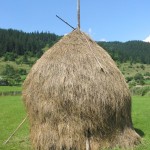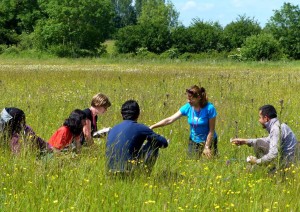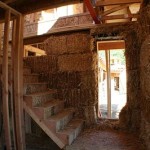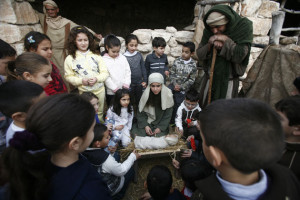Poaceae, as the song goes, is a family of grasses green and wonderful, but just how green and just how wonderful even Poaceae aficionado Dr M did not quite appreciate until he came to pen this #AdventPoaceae post.
All flesh is grass, so the big book says, reflecting the early recognition of the importance of grass as fodder for livestock and an appreciation of plants (grasses) as the basis of the food chain for all animals whether they eat plants directly (herbivores – cattle sheep and donkeys) or eat other animals (carnivores – dogs and cats) or both (omnivores – humans).
But it’s not just green grass that feeds the shepherd’s animals, dried grass (hay or straw) has been recognised as a valuable winter feed for farm animals since time immemorial and all over the world.
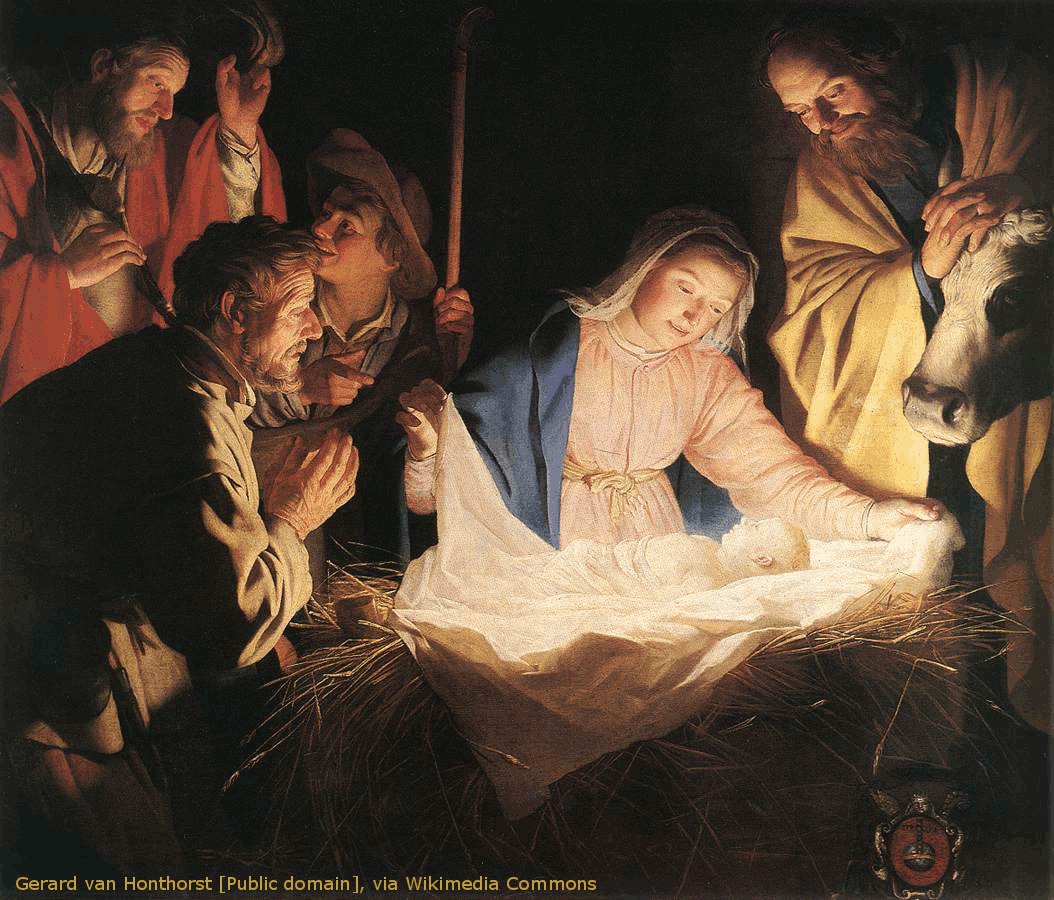
And this is where #AdventPoaceae comes in: all those festive carols and Christmas songs tell of the baby Jesus born in a stable because there was no room at the inn and he was laid in a manger by his mother Mary. But what was in that manger bare? Well, Poaceae for sure, and more specifically dried Poaceae, but was it hay or was it straw? And does it matter? After all being laid in a manger with dried Poaceae in lieu of fine bed linen just goes to emphasise the rude, lowly and humble beginnings of the baby Jesus, whether it was straw or hay is rather academic surely?
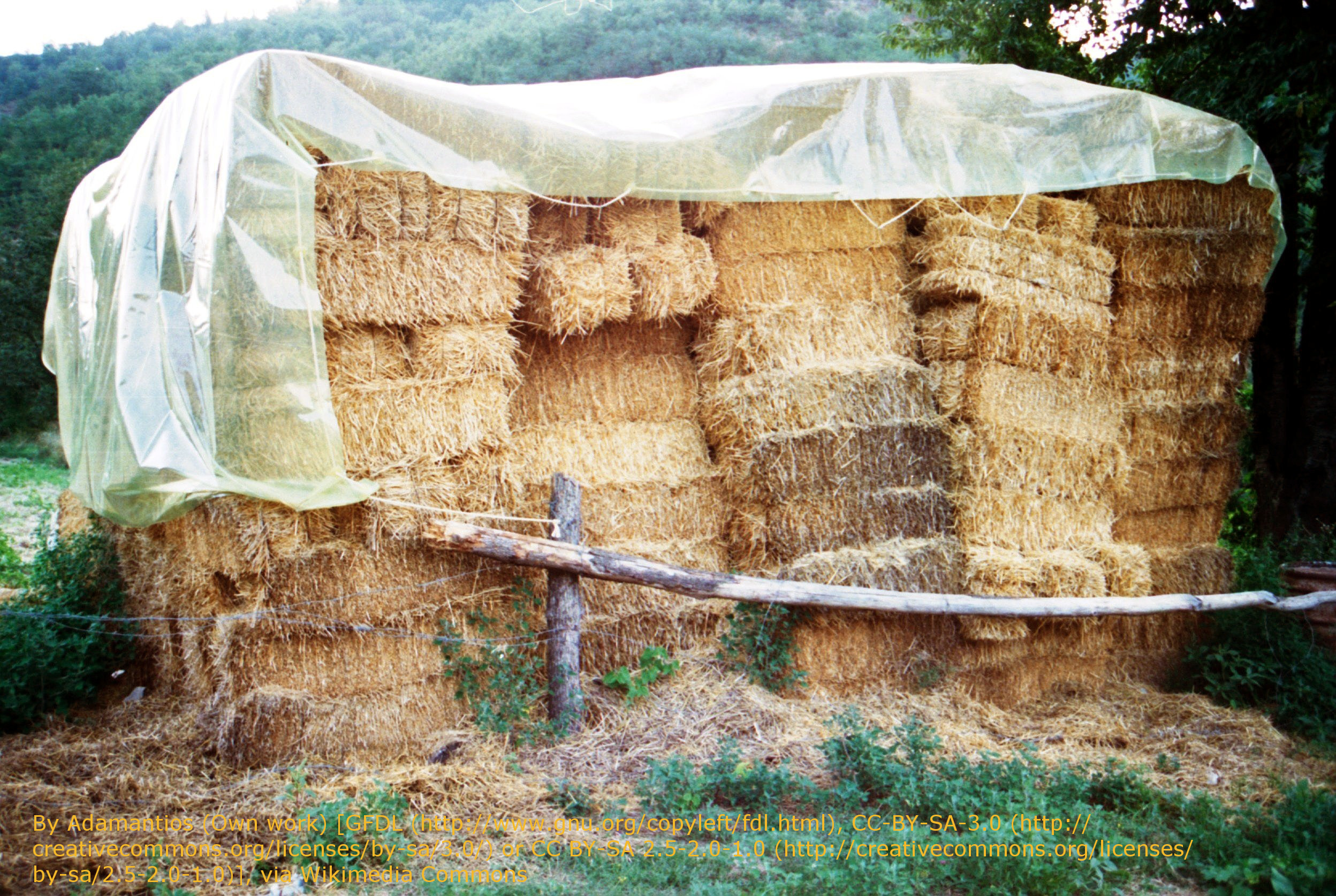
Well, yes and no! Those of you who have lain down in either or both of these will probably attest that laying down in amongst sweet and preferably new-mown hay is a far nicer experience than the straw equivalent! Yes? And maybe, like Dr M, you have childhood memories of building dens from straw bales (the old small rectangular kind bound with twine not the modern giant circular ones!). If so, you will no doubt recall the seriously sore, scratched arms and legs derived from being too much up close and personal with all those straw bales! Soft sweet hay is for sure the better option. But then comfort was not at a premium in that stable all forlorn, so comfort proves nothing here!
In fact the Christmas carols and songs are also of no help to our botanical #AdventPoaceae quest as both are used interchangeably to fit a rhyme, for example:
See him lying on a bed of straw,
A draughty stable with an open door.
and:
Away in a manger….
The stars in the bright sky
Looked down where He lay
The little Lord Jesus
Asleep on the hay.
So we are no further on with our question: hay or straw and does it matter?
Well, certainly it may not matter to all the little school children looking down at the nativity cribs or singing carols at this time of year, they have other things on their minds!
But, botanically, ecologically, agriculturally and even architecturally it matters quite a lot! So let’s look at each of these in turn:
Botanical matters – both hay and straw are in the Poaceae family, straw is from cereals in the tribe Triticeae – wheat, barley and the like, while hay is from a range of meadow-grown Poaceae, and the sweet smell of new mown hay due to coumarin and other compounds in e.g. Anthoxanthum odoratum (Sweet Vernal-grass in the tribe Aveneae). If you want to know why new mown hay smells so good the volatile chemicals released are probably the plant’s way of fighting herbivores and they may also summon beneficial insects such as parasitic and predatory insects that are natural enemies of the herbivores. Some go so far as to suggest these chemicals may also induce defense responses in neighbouring plants. Read more here.
Ecology matters – Straw, as we have seen, comes from crop fields, monocultures of generally low botanical interest. While hay is from meadows managed by mowing followed in some case by aftermath grazing. In England, flower-rich meadows are a rare and declining resource and of high conservation value. The best meadows include the type known as MG5 in the National Vegetation Classification system – Centaurea nigra (Black Knapweed) and Cynosurus cristatus (Crested Dog’s-tail grass) mesotrophic grassland. Meadows on wetter ground are of the MG4 type – Alopecurus pratensis (Meadow Foxtail) – Sanguisorba officinalis (Greater Burnet) grassland. Flower-rich meadows usually have a long history of low inputs of fertilisers and management by mowing and removal of the hay crop to feed livestock and which also opens up the vegetation for establishment of new plant species from seeds and thereby and incidentally driving the maintenance of botanical diversity.
- Traditional hay meadow management Grimani Breviary (ca. 1510)
- Flower-rich meadow in Wiltshire, England
- Loose stacked hay built around a central pole, Romania
Traditional meadow management throughout all of Europe, at least where climatic conditions are conducive to development of meadow grassland, would find the local folk heading to the meadows in the summer with their scythes. Whole families would have taken part, including young children, in this important event which, if done well, guaranteed sufficient feed for the local animals over the harsh winter months. Nowadays lowland meadows are a vanishing botanical resource and the remaining few hundreds of hectares in England are protected as nature reserves.
Dr M’s all-time favourite meadows are the staggeringly rich MG4 meadows at Clattinger farm and managed by Wiltshire Wildlife Trust.
STOP PRESS! Recent field research has identified new MG4 sub-communities check them out here! Furthermore, in an effort to increase the area meadows in our denuded countryside the spreading of so-called green hay is one technique used to restore flower rich meadows and special projects have been set up such as the Weald Meadows initiative.
Agriculture matters – In essence, straw is for bedding and hay is for feed. So actually we can imagine straw bedding on that stable floor (and possibly also in the thatch of the roof) and hay in the manger for to comfort the baby Jesus. Circumstantial evidence only of course, but in its way a bit of a clincher! Hay includes grass and other meadow plants that are cut when alive and full of grain and other seeds. The purpose of the hay is to feed animals. Straw, on the other hand, is simply the stalks of standing wheat or barley or other cereal plants that contain no grain (this has been removed by the harvester).
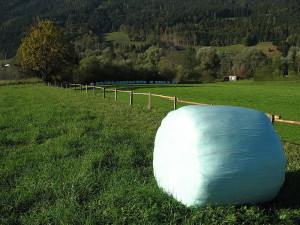 Modern farming has tended to replace hay with silage which is cut early and baled tightly while the grass is still moist to encourage anaerobic fermentation. The resulting silage is of high feed value but silage fields are botanically less interesting than the hay meadows they often replace due to the early cutting and the use of fertilisers and other chemical to maximise productivity (at expense of diversity).
Modern farming has tended to replace hay with silage which is cut early and baled tightly while the grass is still moist to encourage anaerobic fermentation. The resulting silage is of high feed value but silage fields are botanically less interesting than the hay meadows they often replace due to the early cutting and the use of fertilisers and other chemical to maximise productivity (at expense of diversity).
Architecture matters – This is an interesting one, increasingly straw bales are being used for building eco-homes due to their great insulating properties and green credentials compared to other building materials. It’s a fascinating area and you can read more about it here and see examples here
- Straw home during build
- Straw home end product
So, next time you see that crib surround by children singing their hearts out about hay or straw or whatever, just remember there’s more to Poaceae than meets the eye, a family of grasses green and wonderful is just for starters!
Image credits
https://commons.wikimedia.org/wiki/File:Gerard_van_Honthorst_001.jpg
http://www.wheelbirks.co.uk/playbarn
https://en.wikipedia.org/wiki/Hay
http://www.live-ibn.in.com/photogallery/5501.html


